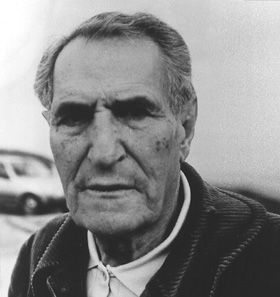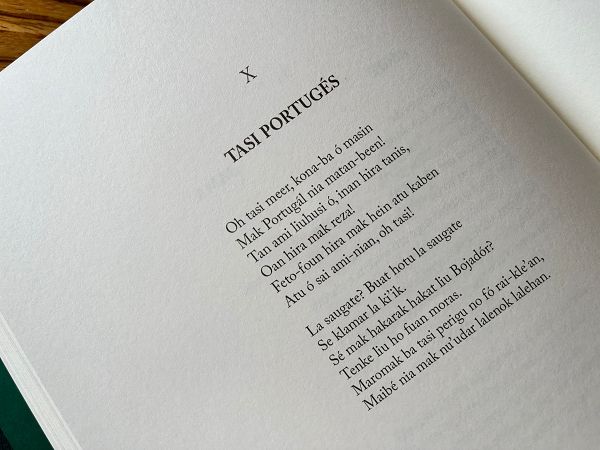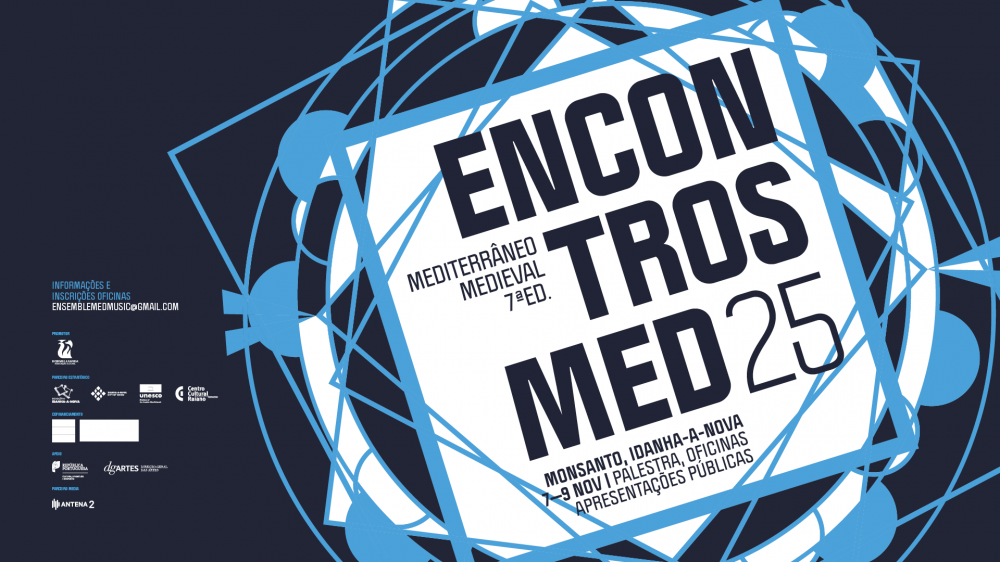Obras de referência da cultura portuguesa
"MAR"
de MIGUEL TORGA
Análise de Duarte Ivo Cruz
Tradução de Alexandra Leitão

Neste ano do centenário do nascimento de Miguel Torga, deve-se referir a extraordinário qualidade poética de "Mar" e o destaque que naturalmente assume, não só no contexto da breve dramaturgia do autor – quatro peças no total – mas mesmo, e não é dizer tão pouco assim, no teatro português do século XX. Cabe aliás ponderar por que razão Torga se desinteressou, a partir de 1958, pelo teatro: e esta data corresponde ainda a uma segunda versão, bastante alterada do "Mar", cuja primeira escrita e edição remonta a 1941. Esclareça-se, ainda por cima, que essa segunda versão envolve uma notável melhoria, se a expressão é correta, no ponto de vista da conciliação entre a belíssima linguagem poética, aliás conciliada com um fundo realista, e a definição de caminhos e soluções no ponto de vista cénico e de espetáculo: o que representa, note-se, um progresso quer no que respeita a esta mesma peça, relativamente à versão original, quer no que se relaciona com as outras três peças do autor.
E nem se diga que a poesia e a literatura de Torga são refratárias à dimensão "de espetáculo": muitos dos Contos, como em tantos poemas, generalize-se deste modo, e em não poucas páginas dos Diários, a força da realidade poética ganha uma dimensão para-cénica que efetivamente falha nas restantes peças de Torga.
Entretanto, há que assinalar ainda que esta versão definitiva do "Mar", diversas vezes encenada, o que mostrou a sua vocação espetacular, inscreve-se numa linha muito própria de poética simbolista que só traz para a cena a violência e bravura do conflito, inclusive do conflito físico – o desaparecimento, no mar, do protagonista Domingos – através de uma descrição extremamente bela na sua linguagem poética, mas serena e calma, a condizer, precisamente, com o mistério simbólico da sedução da sereia. E tudo isto se concilia com falas, cenas e passagens de expressão realista direta.
É caso para dizer que os dois protagonistas da peça são a sereia e o próprio mar que a gera e abriga. E de tal forma, que o desaparecimento (morte) do Domingos não é descrito como um afogamento, mas, assumidamente, como resultado da sedução da sereia: "a sereia já lhe tinha aparecido na véspera e andava sobre ele... lá o agarrou a jeito... E quando elas deitam a mão a um homem é escusado... Levam-no e nunca mais o largam..."
A sereia é pois o grande símbolo do próprio mar. E a descrição belíssima que o Domingos faz do seu encontro com a sereia mistura na mesma "realidade" mítica e simbólica, o mar e a sereia. Vale a pena uma longa transcrição até pela beleza poética da fala:
"De repente o céu abre-se e uma estrela avança direitinha a mim!... Santíssimo Sacramento! Mãe de Deus! - E pus-me a rezar. Mas não valeu de nada. Ainda a oração ia no princípio, e já o clarão a bater na vela grande! Senhora dos Navegantes! Virgem da Misericórdia! (...) O coração batia-me dentro do peito como um cavalo: - Tap! Tap! Tap! Ele há horas! Por fim o mar começa a sossegar e eu acalmei também (...) Limpo o suor da testa, puxo um cigarro, faço lume, e não sei como, olho a estibordo... o mar era um lago de prata. O barco só me lembrava um berço... E na crista de uma onda. Raios me partam se não parecia bruxedo!... Mas quando ia a gritar para a câmara, a chamar o moço, põe-se a cantar!... Não me sai da cabeça que era a estrela em forma de gente... Caiu primeiro do céu e depois veio à tona... E tão linda! Tal e qual uma flor a nascer da água...branquinha!"
Esta longa transcrição serve ainda para mostrar a extraordinária arte poética de Miguel Torga, através da conciliação, frase a frase, cena a cena, personagem a personagem, do realismo e do simbolismo de belíssima expressão. Porque a peça é, de facto, toda ela assim: basta lembrar personagens e cenas como a beata Capitolina, as conversas na taberna, as falas dos pescadores – e no contexto, a força poética, repita-se, que dá a "Mar" o seu enorme valor literário e teatral.
E tudo isto criado por uma homem "da montanha"!
"MAR" by MIGUEL TORGA
In what is the year of the centenary of Miguel Torga’s birth, one must mention the extraordinary poetical quality of “Mar” and its natural pre-eminence not only in the context of the author’s brief dramaturgical output (four plays in all) but also in 20th century Portuguese theatre. We should in fact wonder why Torga lost interest in the theatre after 1958. This date corresponds to a second version of “Mar” that was substantially altered, the first edition dating from 1941. In addition, this second version is considerably better, if that is the right term, from the point of view of the harmonisation between the beautiful poetical language in keeping with a realistic basis, and the definition of solutions and paths from the scenic and theatrical point of view. This represents progress both as regards this play vis-à-vis the original version and as regards its relation with the writer’s three other plays.
Let it not be said that Torga’s poetry and literature are resistant to the “theatrical” dimension. In many short stories as in many poems, if we generalize somewhat, and in quite a few pages of his Diaries, the power of the poetic reality gains a para-theatrical dimension that effectively fails in Torga’s other plays.
One should also highlight that this definitive version of “Mar”, staged on various occasions (demonstrating its spectacular vocation), is part of a very individual line of symbolist poetry that brings to the stage the violence and bravery of the conflict, of the physical conflict even (the disappearance at sea of Domingos, the protagonist) with the use of calm, serene poetical language in an extremely beautiful description in keeping precisely with the symbolic mystery of the seduction of the mermaid. All this is achieved with lines, scenes and passages of direct realistic expression.
One can say that the two protagonists in the play are the mermaid and the sea that breeds and shelters her. So much so that the disappearance (death) of Domingos is not described as drowning but as the result of the mermaid’s seduction: “The mermaid had already appeared to him the previous day and was after him… she grabbed him… and when they get their claws into a man there is nothing he can do… They take him and never let him go again…”
The mermaid is thus the great symbol of the sea itself. Domingos’s charming description of his meeting with the mermaid mingles the sea and the mermaid in the same mythical and symbolic reality. Given the poetic beauty of the speech, it is worth transcribing here:
“Suddenly the sky opens and a star advances directly towards me! Holy Sacrament! Mother of God! I began to pray. But to no avail. I had only just begun when the lightning struck the main sail! Our Lady of Seafarers! Virgin of Mercy! (…) My heart beat in my breast like a horse: - Tap! Tap! Tap! The things that happen! Finally the sea calmed and so did I (…) Having wiped the sweat from my brow, I pulled out a cigarette, lit it and for some reason looked to starboard… the sea was a silver lake. The boat reminded me of a cradle… and on the crest of a wave… God dammit but it seemed like witchcraft! When I was going to shout to the wardroom, to summon the lad, it began to sing! I can’t help thinking that it was a star in the form of a human being… First it fell from the sky and then it floated. So beautiful! Just like a flower rising out of the water… so white!”
This long transcription also serves to show Miguel Torga’s extraordinary poetic art, in every sentence, every scene, every character, as he harmonises realism and symbolism wonderfully expressively. The whole play is like that: we have only to recall characters and scenes such as Capitoliona, the conversations in the tavern, the fishermen’s speeches, and in this context, the poetic force that gives “Mar” its enormous literary and theatrical value.
All this was created by a man “from the mountain”!
projeto desenvolvido pelo Centro Nacional de Cultura

 Divulgue aqui os seus eventos
Divulgue aqui os seus eventos












